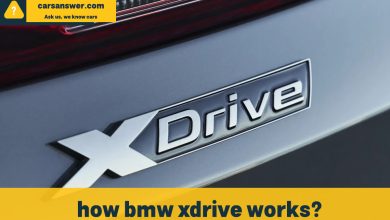What is Toyota Safety Sense and how does it work?

Toyota Safety Sense (TSS) is a suite of advanced driver assistance technologies developed by Toyota to improve vehicle safety and reduce the risk of accidents. This system is designed to help drivers stay aware of their surroundings, avoid potential hazards, and respond quickly and effectively in emergency situations. In this article, we will explore the different features of Toyota Safety Sense and how they work together to provide a safer driving experience.
Overview of Toyota Safety Sense
Toyota Safety Sense is a standard feature on most new Toyota models. The system includes a range of advanced safety technologies, including:
Pre-Collision System (PCS) – This system uses sensors to detect other vehicles, pedestrians, and obstacles on the road ahead. If a potential collision is detected, the system will alert the driver and apply the brakes to reduce the impact of the collision or avoid it altogether.
Lane Departure Alert (LDA) – This system uses a camera to monitor the vehicle’s position on the road. If the vehicle starts to drift out of its lane without signaling, the system will alert the driver with an audible and visual warning.
Automatic High Beams (AHB) – This system uses a camera to detect the headlights of oncoming vehicles and the taillights of vehicles ahead. It automatically switches between high and low beams to ensure maximum visibility without blinding other drivers.
Dynamic Radar Cruise Control (DRCC) – This system uses radar and camera sensors to detect the distance and speed of vehicles ahead. It maintains a safe following distance by automatically adjusting the vehicle’s speed.

Pre-Collision System (PCS)
The Pre-Collision System (PCS) is one of the key features of Toyota Safety Sense. It uses sensors located at the front of the vehicle to detect other vehicles, pedestrians, and obstacles on the road ahead. If a potential collision is detected, the system will alert the driver with an audible and visual warning. If the driver fails to respond, the system will apply the brakes to reduce the impact of the collision or avoid it altogether.
The PCS system uses a combination of radar and cameras to detect potential hazards on the road. The radar sensor is located at the front of the vehicle and uses radio waves to detect the distance and speed of other vehicles ahead. The camera sensor is located behind the windshield and uses visual recognition technology to detect pedestrians, bicycles, and other obstacles on the road.
If the PCS system detects a potential collision, it will first alert the driver with an audible and visual warning. If the driver fails to respond, the system will automatically apply the brakes to reduce the impact of the collision or avoid it altogether. The PCS system can detect collisions at speeds between 7 mph and 110 mph.
Lane Departure Alert (LDA)
The Lane Departure Alert (LDA) system is another important feature of Toyota Safety Sense. It uses a camera located at the top of the windshield to monitor the vehicle’s position on the road. If the vehicle starts to drift out of its lane without signaling, the LDA system will alert the driver with an audible and visual warning.
The LDA system is designed to prevent accidents caused by driver inattention or fatigue. It is particularly useful on long journeys or when driving on monotonous roads where the driver’s attention may wander. The LDA system can detect lane departures at speeds between 32 mph and 110 mph.

Automatic High Beams (AHB)
The Automatic High Beams (AHB) system is another feature of Toyota Safety Sense that helps to improve driver visibility on the road. The AHB system uses a camera located at the top of the windshield to detect the headlights of oncoming vehicles and the taillights of vehicles ahead. It automatically switches
between high and low beams to ensure maximum visibility without blinding other drivers.
The AHB system operates in two modes: automatic and manual. In automatic mode, the system will automatically switch between high and low beams depending on the presence of other vehicles on the road. In manual mode, the driver can control the high beams using the stalk on the steering column.
The AHB system is particularly useful when driving at night or in low-light conditions. It allows the driver to see further down the road and detect potential hazards earlier, improving overall safety on the road.
Dynamic Radar Cruise Control (DRCC)
Dynamic Radar Cruise Control (DRCC) is the final feature of Toyota Safety Sense that we will discuss. DRCC uses radar and camera sensors to detect the distance and speed of vehicles ahead. It maintains a safe following distance by automatically adjusting the vehicle’s speed.
DRCC operates in two modes: regular and following distance. In regular mode, the system maintains a constant speed set by the driver. In following distance mode, the system maintains a safe following distance from the vehicle ahead by automatically adjusting the vehicle’s speed.
DRCC is particularly useful on long journeys or in heavy traffic where the driver may experience fatigue or distraction. It helps to reduce the risk of accidents caused by sudden changes in traffic flow or driver error.
Conclusion
Toyota Safety Sense is a suite of advanced driver assistance technologies that help to improve vehicle safety and reduce the risk of accidents. The system includes features such as Pre-Collision System (PCS), Lane Departure Alert (LDA), Automatic High Beams (AHB), and Dynamic Radar Cruise Control (DRCC). These features work together to help drivers stay aware of their surroundings, avoid potential hazards, and respond quickly and effectively in emergency situations.By incorporating these technologies into their vehicles, Toyota has demonstrated a commitment to improving vehicle safety and reducing the risk of accidents on the road. These features are particularly useful for drivers on long journeys or in heavy traffic, where fatigue and distraction can increase the risk of accidents.
Overall, Toyota Safety Sense represents a significant step forward in vehicle safety technology and is likely to become an increasingly common feature in new vehicles in the years to come.





